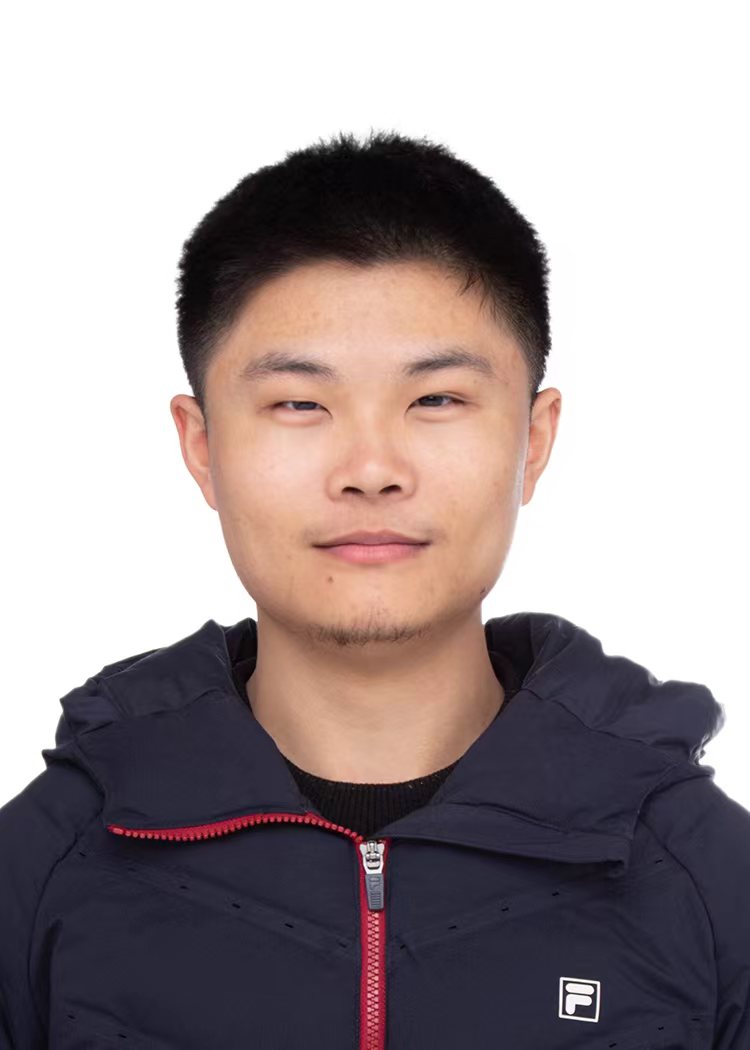News
Congratulations to Yuxi Qian for being awarded the Zhao Zhongyao Scholarship.

Yuxi Qian
One paper (Long-term Feature Extraction via Frequency Prediction for Efficient Reinforcement Learning) accepted to IEEE TPAMI. Congratulations to Mingxuan and all co-authors.
Mingxuan Ye
Congratulations to Xijun for joining the School of Software at Shanghai Jiao Tong University as an Assistant Professor.
Xijun Li
Congratulations to Zhihai and Zijie for being awarded the National Scholarship for PhD. students and MS. students, respectively.
Zhihai Wang
Zijie Geng
Four papers accepted to NeurIPS 2024 (one as Spotlight).
Rui Yang
Zhihai Wang
Haoyang Liu
Jian Luo
Congratulations to Zhexuan Xu and Xilin Xia (undergraduates) for being supported by the National Natural Science Foundation of China (Youth Student Basic Research Program).

Zhexuan Xu

Xilin Xia
One paper (Label Deconvolution for Node Representation Learning on Large-scale Attributed Graphs against Learning Bias) accepted to IEEE TPAMI. Congratulations to Zhihao and all co-authors.
Zhihao Shi
One paper (Learning to Cut via Hierarchical Sequence/Set Model for Efficient Mixed-Integer Programming) accepted to IEEE TPAMI. Congratulations to Zhihai and all co-authors.
Zhihai Wang
Prof. Wang is appointed an Associate Editor of IEEE TPAMI.
Prof. Wang
One paper accepted to ACL 2024.
Hanzhu Chen
Six papers accepted to ICML 2024. Congratulations to Zhihai for his Spotlight paper (< 3.5% acceptance rate).
Zhihai Wang
Yufei Kuang
Zijie Geng
Huanshuo Dong
Congratulations to Zhihai for being honored Excellent Interns (5/400+) by Noah’s Ark Lab, Huawei.
Zhihai Wang
Congratulations to Zhihao for being honored Outstanding Research Intern by Alibaba Cloud.
Zhihao Shi

Certificate
Two papers accepted to ICLR 2024 (one as Spotlight).
Yufei Kuang
Hong Wang
Two papers accepted to NeurIPS 2023 as Spotlight (three in total).
Mingxuan Ye
Zijie Geng
Congratulations to Yinqi Bai (undergraduate) for being supported by the National Natural Science Foundation of China (Youth Student Basic Research Program). This is the first time the NSFC has piloted a program to support undergraduate students.
恭喜我组本科生白寅岐同学获得“国家自然科学基金青年学生基础研究项目”资助!这是国家自然科学基金首次试点资助优秀本科生。
Congratulations to Yufei for being honored Excellent Interns (5/400+) by Noah’s Ark Lab, Huawei.
Yufei Kuang

Certificate
Three papers accepted to ICLR 2023.
Zhihao Shi
Zhihai Wang
Zijie Geng
Two papers accepted to AAAI 2023.
Zhihai Wang
Qiyuan Liu
Congratulations to Zijie for being awarded
the MSRA Stars of Tomorrow.
Zijie Geng
We are recruiting strongly self-motivated talents — including undergraduates, graduates, and postdocs — to join our group.
Please contact admission AT miralab.ai .
Two papers accepted to SIGKDD 2022.
Yang Rui
One paper accepted to TPAMI.
Zhanqiu Zhang
Zhihao Shi
One paper accepted to WWW 2022.
Zhanqiu Zhang
Two papers accepted to AAAI 2022.
Yufei Kuang
Zhihai Wang
One paper accepted to NeurIPS 2021.
Zhanqiu Zhang
Congratulations to team GraphMIRAcles for being awarded as a winner in the WikiKG90M-LSC track of KDD Cup 2021.
Jianyu Cai
Jiajun Chen
Taoxing Pan
Zhanqiu Zhang
One paper accepted to ICDE 2021.
Xijun Li
Congratulations to Zhanqiu and Qi for serving as
PC Members of SIGKDD 2021.
Zhanqiu Zhang
Qi Zhou
One paper accepted to AAAI 2021.
Jiajun Chen
Congratulations to Zhanqiu for winning
the National Scholarship 2020.
Zhanqiu Zhang
Two papers accepted to NeurIPS 2020.
Zhanqiu Zhang
Qi Zhou
Three papers accepted to AAAI 2020.
Zhanqiu Zhang
Qi Zhou
Taoxing Pan